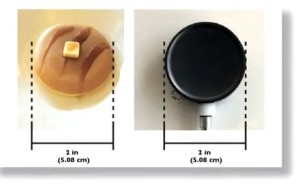eBay is a great place to buy a Geiger Counter
Prices have never been better. This article will help you get the best geiger counter for your individual needs at the best price.
Now is the best time to buy
A combination of factors have created a buyers market for radiation detection instruments. During the Fukushima Daiichi disaster manufacturers increased production to deal with the emergency. At the same time, new companies jumped into the marketplace because demand was so high. These events have created a perfect storm for buyers. Manufacturers of new equipment have dropped prices to reduce inventory. At the same time, a lot of used equipment is showing up as government laboratories and agencies are dumping old equipment.
Price
Thirty years ago a decent Geiger Counter was hard to find, and cost about $700. Today, with some educated shopping and a little luck, you can get a better instrument for half the price. For the same $700 you can get a smaller professional modern digital instrument with high sensitivity, Pancake Detector, and advanced features (alarm, timer, long battery life). If you’re interested in buying one then you will likely do your research on all the online marketplaces offering the product. Amazon is likely to be one of the first you check out. If you use sites like Raise then you could find some great promo codes and coupons to help bring your online shop down in price. It’s never been easier to make savings.
Timing
Timing is very important when buying a geiger counter. Buying during an emergency is not good timing. During the recent Fukushima disaster good geiger counters were next to impossible to obtain. One of the IMI-Medcom models, the Inspector Alert, (which usually sells for $699 new) was selling used on a Japan auction site for as high as $9,000 (US yen equivalent). Geiger counter demand runs high in cycles that seem to average about ten years: TMI, Chernobyl, 9/11, Fukushima. Let?s hope we move away from having these kinds of events, but if you want a good instrument don?t wait until everyone is trying to get one at once. Good timing could save you a bundle.
Here are a few more things to keep in mind when shopping on eBay:
About Used equipment
If you are thinking of buying a used instrument, try to get a history on it. Some used instruments can be contaminated. If the instrument comes from a superfund site, the chances of that are higher. Some calibration labs are equipped to check for contamination and repair used instruments. One such lab is Qal-Tek.
If you like tinkering and can fix things yourself, some of the older equipment is fun to work with. Keep in mind that some older instruments need special batteries. Some even use vacuum tubes that may not be available today. Many of these same instruments have historical value and are worthy of restoration.
What kind of radiation do you want to detect?
When you do a search for “geiger counter” on eBay you will see a variety of instruments, and not all of them detect ionizing radiation. Ionizing radiation is what geiger counters are designed to detect. Electromagnetic radiation detectors designed for measuring electrical fields in homes, microwaves, cell phones, etc. are not geiger counters and will not detect alpha, beta, gamma and x rays.
There are also some scintillation detectors listed on eBay. Most of these are designed to detect gamma and x rays only, and they are generally very good at that. Most do not detect alpha or beta radiation.
If you want to detect alpha and beta radiation, be sure to get an instrument that has a “mica window” detector. The mica window allows these charged particles to enter the GM (Geiger Mueller) tube and be detected. Some GM tubes can detect energetic betas through a “thin sidewall.” These detectors will not detect alpha particles, and generally cannot detect anything from low energy beta emitters such as tritium or carbon 14.
If you are curious and buying the instrument to learn about the invisible world of radiation, you will probably want to detect alpha and beta particles. If you are buying the instrument for personal safety purposes, you will probably want to detect alpha and beta particles. Alpha radiation is considered to be potentially 20 times more damaging to tissue than gamma or beta radiation when inhaled or otherwise taken internally.
Low cost instruments
There are many inexpensive Geiger Counters from Belarus,Russia, the Ukraine and China these days. The quality of the Belarus, Russian and Ukrainian instruments have been improving over the past 20 years, and some of the Chinese instruments look very cool. Look for ratings or reviews on these (or any instrument you are purchasing) to make sure they are reliable and will meet your needs and expectations. Also make sure you can understand the language the instrument and manual communicate in. Virtually all of the instruments from Belarus, Russia, Ukraine and China are designed to detect only gamma and energetic betas. If this is all you need, check these instruments out and read the reviews.
Support
Check to see if the seller or manufacturer provide after-sales support, and can answer questions if they come up. Established companies like Ludlum and IMI-Medcom have toll free numbers and many years of experience supporting customers. They will answer questions about their instruments, even if you have purchased them used on eBay. Both company?s instruments can be expected to last for many years.
Some of the older manufacturers have merged or gone out of business, so you will not find support from the companies themselves. You may, however, find support in the Health Physics community, or from calibration and repair laboratories.
Eberline Instruments is now part of the Thermo group. Victoreen (the company that made a lot of the old yellow instruments for fallout shelters) is no longer around, but some of their technology is now with Fluke Instruments.
Display units
If the instrument reads in R/hr it is probably designed for fallout shelter use, and will have little value except in the case of nuclear war. mR/hr for gamma measurements is common in the U.S. Much of the rest of the world uses ?Sv/hr. It?s easy to convert between the two. 1 mR/hr = 10 ?Sv/hr. Normal background radiation (depending on location, altitude, natural radioactivity in soil) is approximately 0.01 mR/hr or 0.10 ?Sv/hr.
For mixed alpha, beta, gamma measurements CPM (counts per minute) is the display mode of choice. Some instruments have timers that will allow you to take timed measurements for detecting subtle changes in radiation levels. In the older instruments this was accomplished with scalers, sometimes using neon bulbs. Modern digital instruments use integrated micro controllers and LCD displays to accomplish the same thing in a smaller lighter package.
Instruments designed for surface contamination, such as the IMI Inspector Alert, will display units in both mR/hr and CPM. The new Inspector Alert V2 will also display in ?Sv/hr, CPM or CPS and automatically calculate the average CPM at the end of a timed counting period.
Detector size matters.
Instruments with small GM tubes, like the wrist watch detectors, can be ok for detection of high level gamma radiation, but not very useful for detecting more subtle radiation level changes.
Analog instruments
Analog instruments (with a needle that moves) are generally responsive to rapid change. They are suitable for detecting radiation in labs and hospitals, and other environments where radionuclides are used routinely. They are generally not very good for detecting subtle changes in the environment. Analog instruments also tend to not have features to alert the user if radiation levels increase.
Digital instruments
Digital geiger counters provide the advantage of solid state components that are not subject to damage or breakage with shock or abuse of the instrument. They also tend to be more stable in temperature extremes, and high humidity environments.
Energy Compensated Instruments
If you are planning to measure gamma only at elevated levels and can live with reduced detector sensitivity, an energy compensated instrument may be appropriate for you. You will, however, be unable to detect any beta or alpha radiation, or low energy gamma radiation (below 70 to 100 keV, depending on the detector).
Pancake detectors will have a higher response to alpha and beta radiation, relative to gamma. To get a gamma reading in ?Sv or mR/hr in a mixed radiation field you will need to shield the tube from the particles. Paper will stop alpha radiation, and plastic or aluminum will shield betas. Thickness required will vary with the energies of the radionuclides. More on this later.
Fukushima clean up and debris
If you are dealing with anything from Fukushima Daiichi, the main radionuclides to be aware of are Cesium 134, Cesium 137 and Strontium 90. These are all primarily beta radiation emitters. If you are trying to clean surfaces, or detect radiation on marine debris, etc. a pancake radiation detector is advised. See The Noble “Pancake” Radiation Detector. Alternatively, lower cost instruments with smaller mica windows, such as the Radalert 100 or CRM 100 will have lower sensitivity than the pancake, but won?t leave you blind.
Keep these thoughts in mind while shopping. Good luck finding the geiger counter that serves your needs at the best price!
Comments closed




